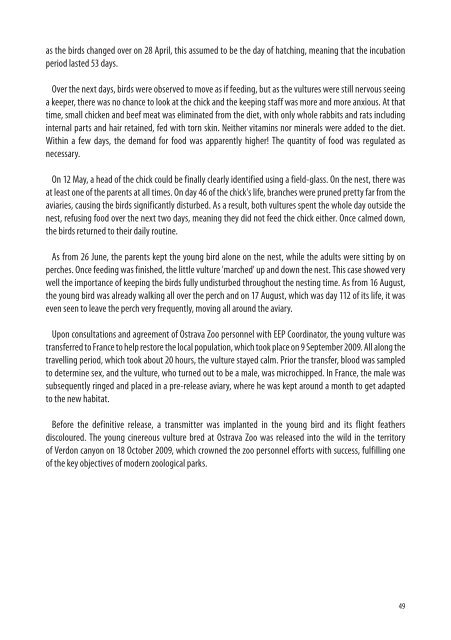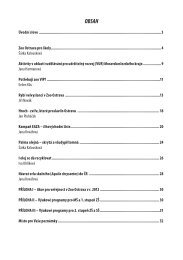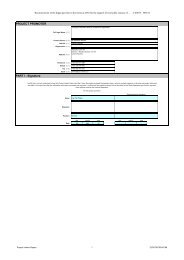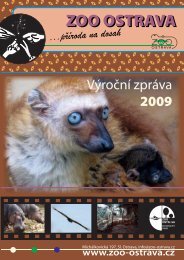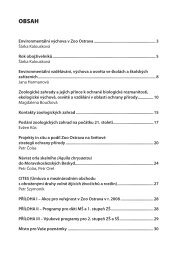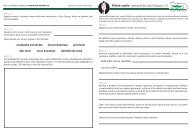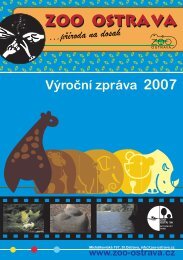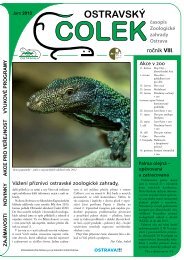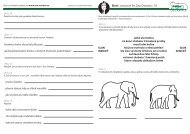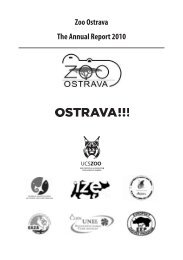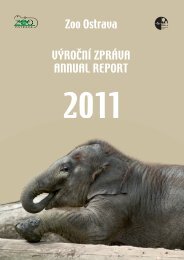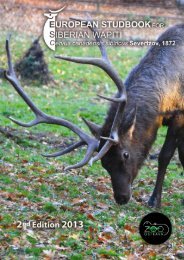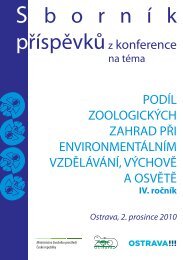Create successful ePaper yourself
Turn your PDF publications into a flip-book with our unique Google optimized e-Paper software.
as the birds changed over on 28 April, this assumed to be the day of hatching, meaning that the incubation<br />
period lasted 53 days.<br />
Over the next days, birds were observed to move as if feeding, but as the vultures were still nervous seeing<br />
a keeper, there was no chance to look at the chick and the keeping staff was more and more anxious. At that<br />
time, small chicken and beef meat was eliminated from the diet, with only whole rabbits and rats including<br />
internal parts and hair retained, fed with torn skin. Neither vitamins nor minerals were added to the diet.<br />
Within a few days, the demand for food was apparently higher! <strong>The</strong> quantity of food was regulated as<br />
necessary.<br />
On 12 May, a head of the chick could be finally clearly identified using a field-glass. On the nest, there was<br />
at least one of the parents at all times. On day 46 of the chick's life, branches were pruned pretty far from the<br />
aviaries, causing the birds significantly disturbed. As a result, both vultures spent the whole day outside the<br />
nest, refusing food over the next two days, meaning they did not feed the chick either. Once calmed down,<br />
the birds returned to their daily routine.<br />
As from 26 June, the parents kept the young bird alone on the nest, while the adults were sitting by on<br />
perches. Once feeding was finished, the little vulture 'marched' up and down the nest. This case showed very<br />
well the importance of keeping the birds fully undisturbed throughout the nesting time. As from 16 August,<br />
the young bird was already walking all over the perch and on 17 August, which was day 112 of its life, it was<br />
even seen to leave the perch very frequently, moving all around the aviary.<br />
Upon consultations and agreement of <strong>Ostrava</strong> <strong>Zoo</strong> personnel with EEP Coordinator, the young vulture was<br />
transferred to France to help restore the local population, which took place on 9 September <strong>2009</strong>. All along the<br />
travelling period, which took about 20 hours, the vulture stayed calm. Prior the transfer, blood was sampled<br />
to determine sex, and the vulture, who turned out to be a male, was microchipped. In France, the male was<br />
subsequently ringed and placed in a pre-release aviary, where he was kept around a month to get adapted<br />
to the new habitat.<br />
Before the definitive release, a transmitter was implanted in the young bird and its flight feathers<br />
discoloured. <strong>The</strong> young cinereous vulture bred at <strong>Ostrava</strong> <strong>Zoo</strong> was released into the wild in the territory<br />
of Verdon canyon on 18 October <strong>2009</strong>, which crowned the zoo personnel efforts with success, fulfilling one<br />
of the key objectives of modern zoological parks.<br />
49


